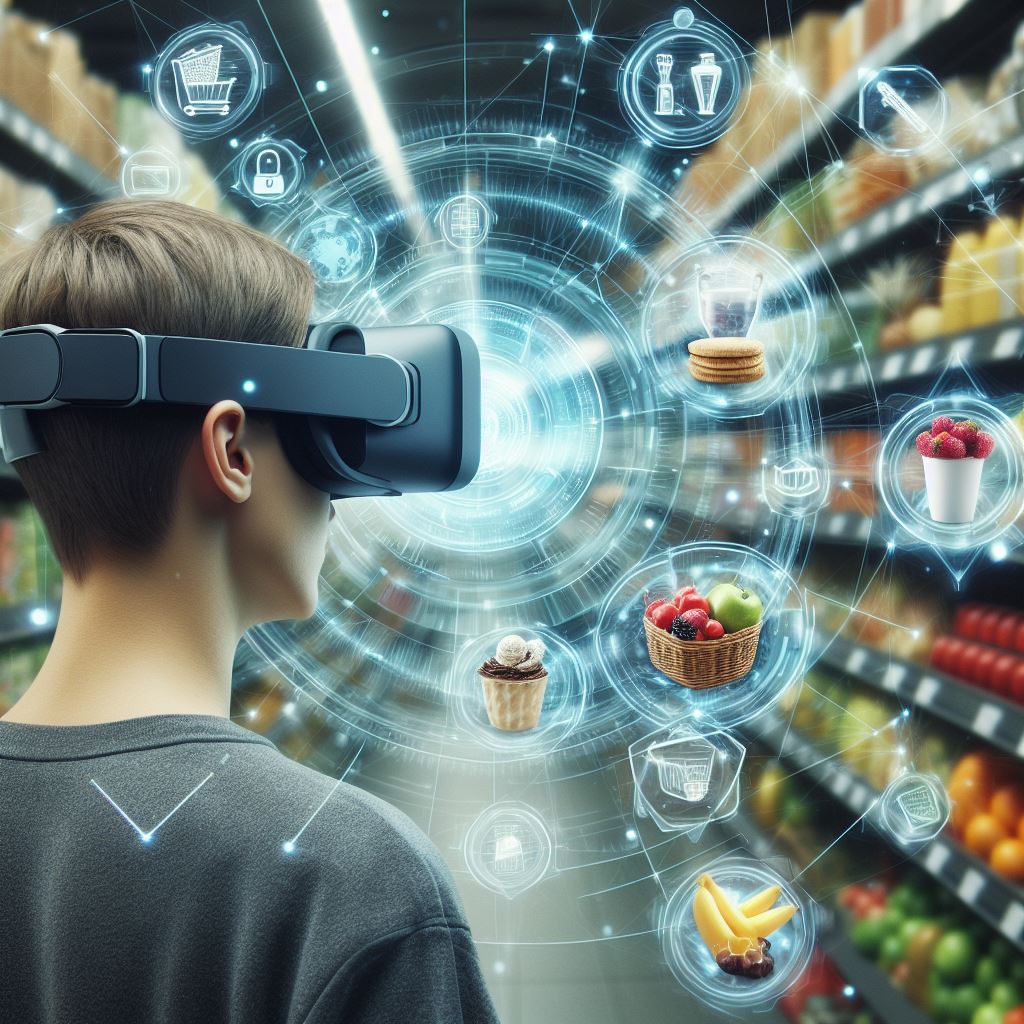The future trends in the augmented reality shopping industry are set to transform how consumers interact with retail environments, enhancing both online and in-store experiences. As AR technology advances, it offers innovative ways to engage shoppers, improve personalization, and streamline the purchasing process. This article explores the key trends shaping the future of augmented reality in shopping and what retailers can expect in the coming years.
Industry Trends and Outlook
The augmented reality (AR) shopping industry is expected to reach USD 11.6 billion by 2028 from USD 3.4 billion in 2023, at a CAGR of 28.0% from 2023 to 2028. Increasing adoption of online shopping and e-commerce platforms, growing demand for personalized shopping experience, and increasing smartphone penetration are some of the major factors contributing to the growth of AR shopping industry .
1. Advanced Virtual Try-Ons
Overview: Virtual try-ons are revolutionizing how customers experience products before purchase, making AR a powerful tool in the shopping industry.
Future Trends:
- Enhanced Realism: Future AR virtual try-ons will feature more accurate and realistic 3D models, improving the fitting and appearance of products such as clothing, accessories, and cosmetics.
- AI-Driven Personalization: Integration with artificial intelligence will allow for personalized product recommendations and virtual fitting suggestions based on individual preferences and past shopping behavior.
Impact: Enhanced virtual try-ons will boost consumer confidence, reduce returns, and increase satisfaction by offering a more lifelike representation of products.
2. Interactive In-Store AR Experiences
Overview: AR is transforming physical stores by creating immersive and interactive shopping environments.
Future Trends:
- AR Navigation and Assistance: AR apps will guide shoppers through stores, highlighting product locations, promotions, and relevant information to enhance the in-store shopping experience.
- Interactive Product Displays: AR-enabled displays will allow customers to interact with product information, view 3D models, and explore different product configurations in real-time.
Impact: Interactive in-store AR experiences will enhance customer engagement, streamline the shopping process, and create a more memorable retail experience.
Download PDF Brochure @
https://www.marketsandmarkets.com/pdfdownloadNew.asp?id=26449280

3. Social Media and AR Shopping Integration
Overview: Social media platforms are integrating AR features, merging social interaction with shopping experiences.
Future Trends:
- AR Shopping on Social Platforms: Consumers will be able to use AR to try on products directly through social media apps and make purchases without leaving the platform.
- Social Sharing Features: Enhanced AR shopping experiences will encourage users to share their virtual try-ons and product finds with their network, driving organic reach and influencing purchasing decisions.
Impact: Integration with social media will amplify brand visibility, foster community engagement, and leverage social proof to drive sales.
4. Personalized AR Shopping Environments
Overview: Personalization is key to enhancing the shopping experience, and AR is at the forefront of delivering customized interactions.
Future Trends:
- Customized Virtual Stores: AR will create personalized virtual shopping environments based on user preferences, shopping history, and real-time interactions, offering a tailored experience.
- Adaptive Product Visualizations: AR will provide dynamic product visualizations that adjust according to user-specific data, making the shopping experience more relevant and engaging.
Impact: Personalized AR experiences will lead to higher conversion rates, increased customer loyalty, and a more engaging shopping journey.
5. AI and AR Integration
Overview: The integration of AI with AR is set to enhance shopping experiences by providing intelligent, data-driven insights and assistance.
Future Trends:
- AI-Powered AR Assistants: Virtual shopping assistants powered by AI will offer real-time support, product recommendations, and answer customer queries based on their behavior and preferences.
- Predictive Analytics: AI will analyze user interactions and preferences to anticipate needs and suggest products, enhancing the shopping experience with proactive recommendations.
Impact: The convergence of AI and AR will make shopping more intuitive, efficient, and personalized, improving overall customer satisfaction.
6. Sustainable AR Shopping Practices
Overview: As consumers increasingly prioritize sustainability, AR shopping will focus on promoting eco-friendly choices and practices.
Future Trends:
- Virtual Impact Assessments: AR applications will allow shoppers to assess the environmental impact of their purchases, including carbon footprint and material sourcing.
- Eco-Friendly Packaging Visualization: AR will showcase eco-friendly packaging options and provide information on recycling and disposal, supporting sustainable shopping habits.
Impact: Sustainable AR practices will align with consumer values, enhancing brand reputation and fostering loyalty among environmentally conscious shoppers.
7. Seamless Cross-Channel Integration
Overview: AR technology will facilitate a seamless shopping experience across both online and offline channels.
Future Trends:
- Omni-Channel AR Experiences: AR will bridge the gap between online and in-store shopping, providing a consistent experience across all touchpoints and allowing for virtual previews and in-store interactions.
- Unified Customer Profiles: Integration with customer data systems will enable AR applications to deliver cohesive experiences and personalized recommendations based on a customer’s interaction history.
Impact: Cross-channel integration will enhance customer experience, streamline the shopping journey, and ensure brand consistency across all platforms.
The future trends in the augmented reality shopping industry highlight a transformative shift towards more immersive, personalized, and efficient retail experiences. Advancements in virtual try-ons, interactive in-store AR, social media integration, and AI-driven personalization are set to redefine how consumers shop. As AR technology continues to evolve, it will offer unprecedented opportunities for engagement, personalization, and sustainability, driving innovation and setting new standards in the retail industry. Retailers who embrace these trends will be well-positioned to lead in an increasingly dynamic and competitive market.
